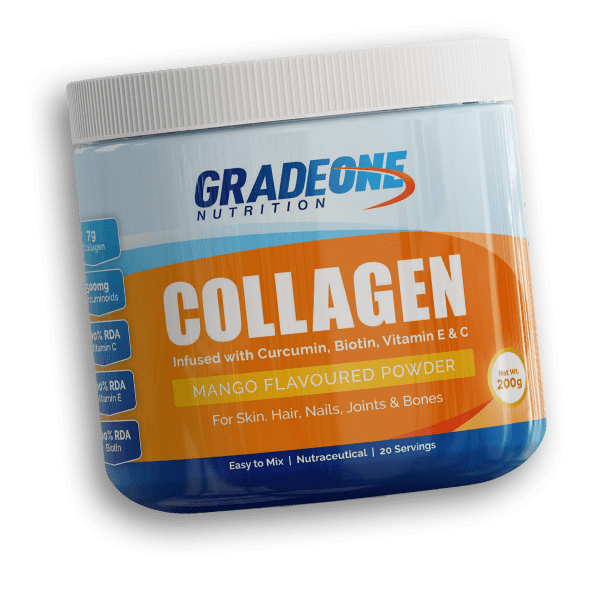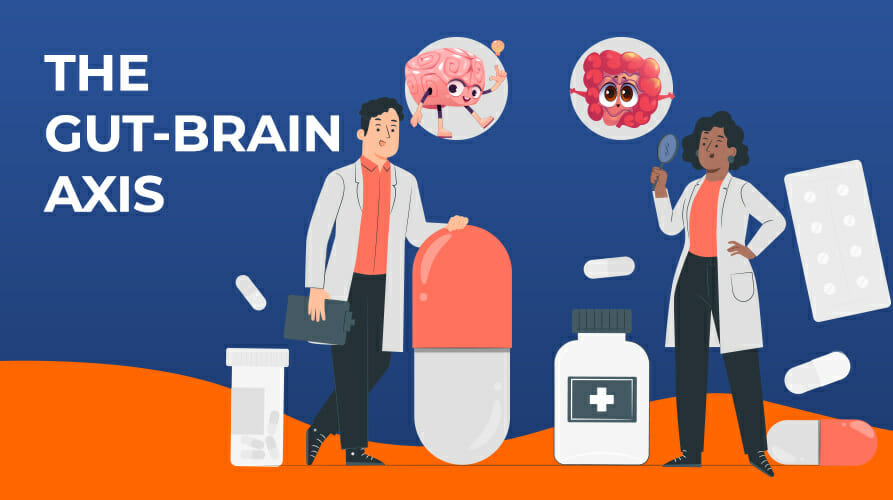The gut and the brain have a complex relationship that is only beginning to be understood by scientists.
Known as the gut-brain axis, this connection is a two-way street, with the gut sending signals to the brain and the brain sending signals to the gut.
This communication is essential for regulating digestion, metabolism, sleep, weight, and overall health.
This would mean that when your brain is hostile to an external decision, it would manifest that rejection in the form of gut control. Thus, if you have ever felt nauseous before a big presentation, that is likely because your brain exercises motion control over your gut.
Research and studies are nascent, yet they lead to a future where we will see how mental well-being will be understood and treated by studying symptoms in the gut, and vice versa.
The gut and brain are linked in many ways, but the two most pivotal pathways of their connection are – the vagus nerve and the gut microbiome.
The trillions of microorganisms form our gut microbiome and play a key role in our overall health. This community of bacteria, fungi and viruses refer to as the gut microbiota.
The vagus nerve is a cranial nerve that runs from the brainstem to the abdomen and plays a role in regulating the digestive system, heart rate, and other functions. It runs only 90 cms (35 inches) long.
The vagus nerve provides a pathway for the bidirectional relationship between the gut and brain through the central nervous system. This allows the gut to send and receive signals to and from the brain.
For a bite-sized version of what we are about to discuss, check out this video we made the other day, explaining how the gut and the mind are connected!
Read on to see how the Gut-Brain axis holds the master key to all your body’s locks, and how diet, supplements and physical activity are key in keeping this axis in check.
| What does Gut-Brain Axis communication look like? |
| How the gut-brain axis affects your Dietary preferences. |
| How to make the Gut-Brain Axis work in your favour? |
What does Gut-Brain Axis communication look like?
When you’re healthy, bacteria are kept safely inside your gut. For the most part, the bacteria and your gut live in harmony.
When you eat the wrong foods, the ratio of good bacteria to bad bacteria changes. Too much bad bacteria in your gut will lead to diseases like Crohn’s disease, Ulcerative colitis and Irritable bowel syndrome (IBS).
A misbalance of gut bacteria diversity in your gastrointestinal tract will lead to deteriorated digestion.
It is likely that the gut microbiome picks up on the stimulation and conversation carried out through the vagus nerve and responds positively to fibre intake. Fibre intake helps in the production of the neurotransmitter – serotonin, which aids in mood and sleep regulation.
Serotonin is a chemical neurotransmitter that plays a role in regulating mood, anxiety, and other cognitive functions.
Research suggests that increasing serotonin levels can activate the vagus nerve, which can lead to a decrease in heart rate and blood pressure, and improve gut motility.
Additionally, studies have found that low levels of serotonin are associated with inflammation in the gut, and that increasing serotonin levels through medication or other means can reduce inflammation and improve gut health.
This conversion of fibre to serotonin is a clear signal of the communication carried on by the gut and brain axis.
How the gut-brain axis affects your Dietary preferences.
A corroded gut-brain axis can alter what kind of foods you will be tempted to eat. In an age-old evolution conflict between the parasite and the host, the parasite begins to control its host, to maximize its own fitness, over the host’s fitness.
Thus, your sugar cravings, gluten and dairy intolerances, and inclinations to request extra spice in every meal, might be the puppetry of these microorganisms in your gut.
Next, this extra sugar and extra salt further inflame your gut lining, thus trapping you in a never-ending loop of loss against this microbiota.
In a recent discussion with Caltech faculty, Scientists revealed that once the gut microbiome is wiped off due to antibiotics, the test subjects (mice) projected an increased consumption of sugar once they were given unrestrained access to sugars, and their consumption for regular mice food decreased.
Thus, a sugary diet is a symptom and a cause of corroded gut function. And we know how increasing sugar is an all-kill for your body functions.
How to make the Gut-Brain Axis work in your favour?
Research indicated that a good mix of fruits, vegetables, tea, coffee, dark chocolate and red wine was correlated with increased bacterial diversity.
Physical activity leads to improved digestion along with a fibre-rich diet.
Adding healthy supplements to this list can enhance the gut lining and improve gut function. Marine Collagen, derived from deep sea fish, has an abundance of the healthy protein collagen, that can enhance the thickness of the gut lining, which prevents healthy bacteria in your gut from leaking away.
Here is how marine Collagen in its hydrolyzed form aids your gut function and secures a healthy diversity of gut microbiota, that is not at war with each other.

Repairs the lining of the stomach and intestines
Collagen can help to seal any gaps in the gut lining, which can help to reduce the symptoms of a leaky gut and improve overall gut health.
Glycine, one of the amino acids in GradeOne Hydrolyzed Collagen Supplement, is used by the body to produce stomach acid and bile, which are important for proper digestion.
Collagen helps build the seal in places where there is a hole in the gut, preventing necessary nutrients and the gut bacteria to stay intact.
Collagen not only builds new cells in places but also manages the protection, strengthening and longevity of the cells around.
May aid in preventing inflammation in the intestines
Hydrolyzed collagen can help to strengthen the gut lining, making it more resistant to damage and less permeable to harmful substances.
This can be beneficial for conditions like IBS and ulcerative colitis, which are characterized by chronic inflammation.
Glutamine is one of the necessary 17 amino acids in the GradeOne Collagen supplement. It is important for the health of the intestinal lining and helps to maintain the integrity of the gut barrier, which can help to reduce the risk of inflammation and infections in the gut.
Amino Acids help in Damage Repair and Joint and Muscle Healing
Glutamine is important for the function of the immune system and may help to support the production of white blood cells and antibodies
Glutamine aids in the synthesis of glutathione, which is one of the most important antioxidants in your body.
This antioxidant prevents the risk of cancer and allows the joints and muscles to receive faster recovery from injuries and workouts.
Proline is an important component of collagen, a protein that is important for the health of skin, hair, and nails.
Proline may help to support muscle recovery after exercise by helping to repair and rebuild muscle tissue.
According to this study, proline is ‘promising’ and might be able to improve wrinkles when combined with other amino acids, glycine and leucine.
